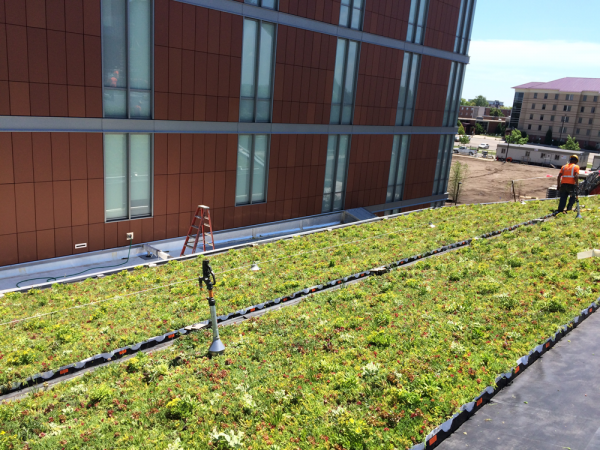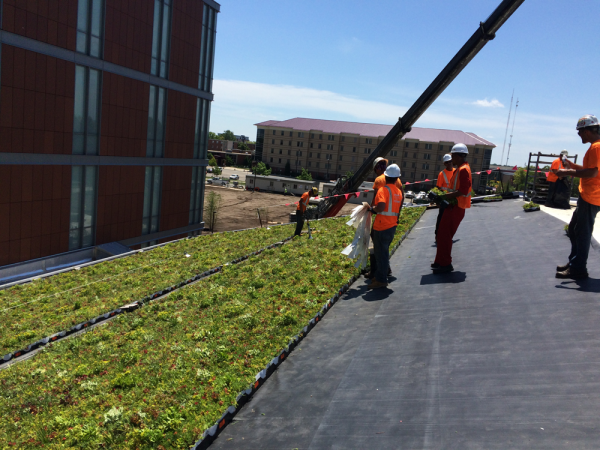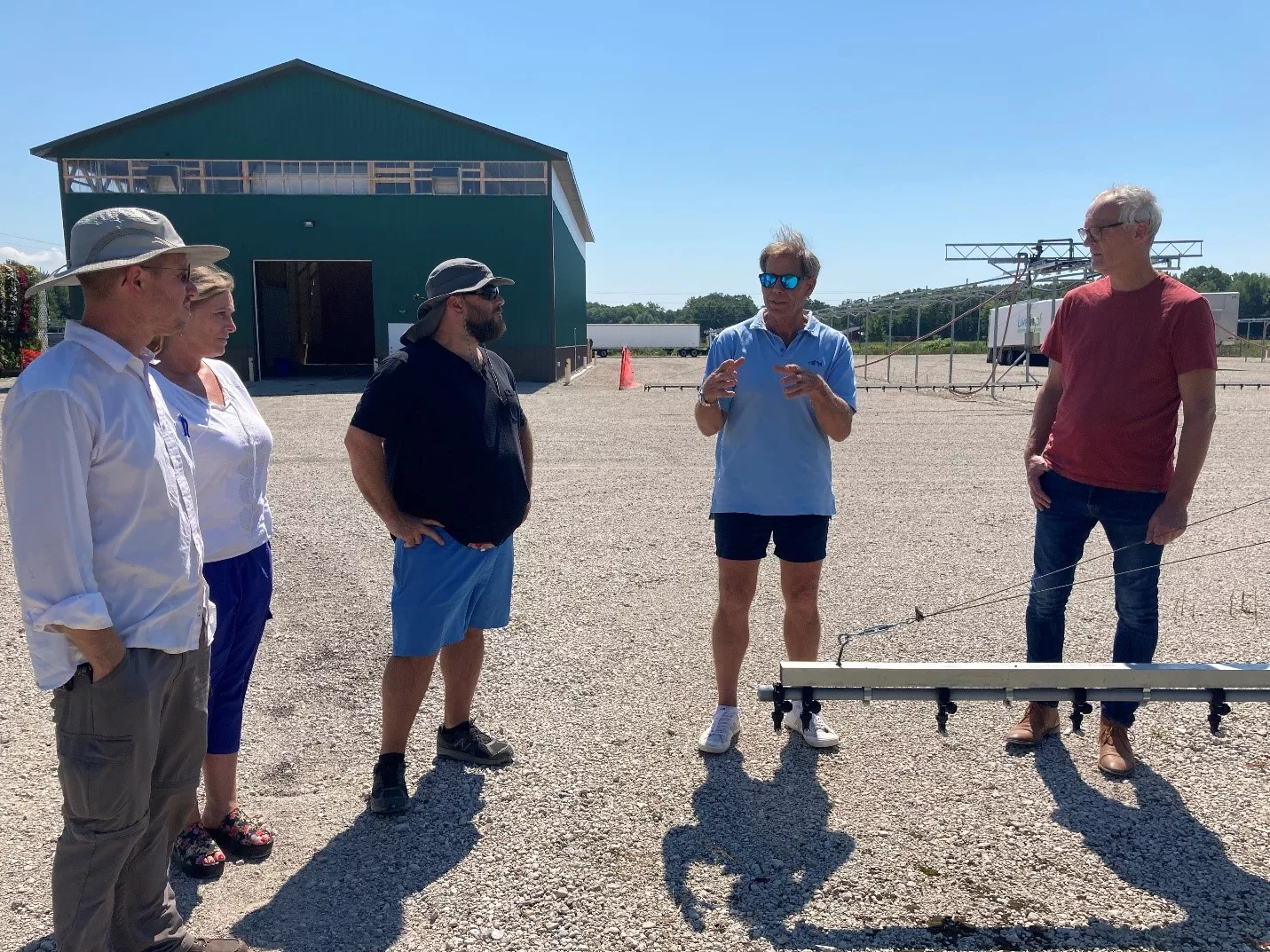A 6700 square foot LiveRoof® green roof is being installed on the new Biosciences Building at Central Michigan University, July 22-26. The green roof provides a natural complement to the groundbreaking human and environmental health research conducted by CMU faculty and students. The building is scheduled to be completed in September and classes in the facility will start in January 2017.
The 170,000 square foot Biosciences Building will host a plethora of science labs, a 112-person capacity active learning classroom, numerous student study, collaboration and meeting spaces, and offices. The research conducted in the Biosciences Building will allow the university to continue to establish itself as a leader in human and environmental health. The $95 million Biosciences Building is the largest capital project in CMU’s history.
“The Biosciences Building interior features abundant daylight, natural wood paneling and other sustainable materials connect this building to its mission and work. The LiveRoof green roof and accompanying LiveWall, located inside the building, provide students and staff access to plants, natural views and daylight.”
LiveRoof is a patented, subterranean modular system that unites soil and plants creating a beautiful, meadow-like aesthetic. The installation delivers a fully-grown carpet of custom-mix, draught-tolerant sedums providing four seasons of color and function. These green roofs provide numerous, significant environmental benefits:
- Reduces stormwater runoff by 50 – 90 percent
- Lowers interior sound levels by as much as 40 decibels
- Improves air filtration; one square foot of green roof can filter seven ounces of dust and smog per year. Plant photosynthesis also reduces greenhouse gases in the air
- Increases roof life; soil and plants provide a protective barrier, along with a waterproof roof lining, to extend roof life by as much as 200-300 percent.
“Central Michigan University is delivering a preeminent design in the new Biosciences Building,” according to John Aleck of LiveRoof LLC. “This building is designed to support innovative research in bright, breathable laboratories. Providing faculty and students with an open, flexible work-study space will undoubtedly propel these programs to new levels while achieving sustainability stewardship.”
Green roof owners can also expect to mitigate the urban heat island effect, while reaping energy conservation value, and gaining habitable space when including patios, walkways and seating in the rooftop garden design.
A planted roof also provides financial benefits including: energy conservation and conservation of municipal septic systems. Green builders and remodelers can expect between 10–19 percent higher return on investment, as much as 10 percent increased building value, while enjoyed a marked reduction (up to 14 percent) in building operating costs.









